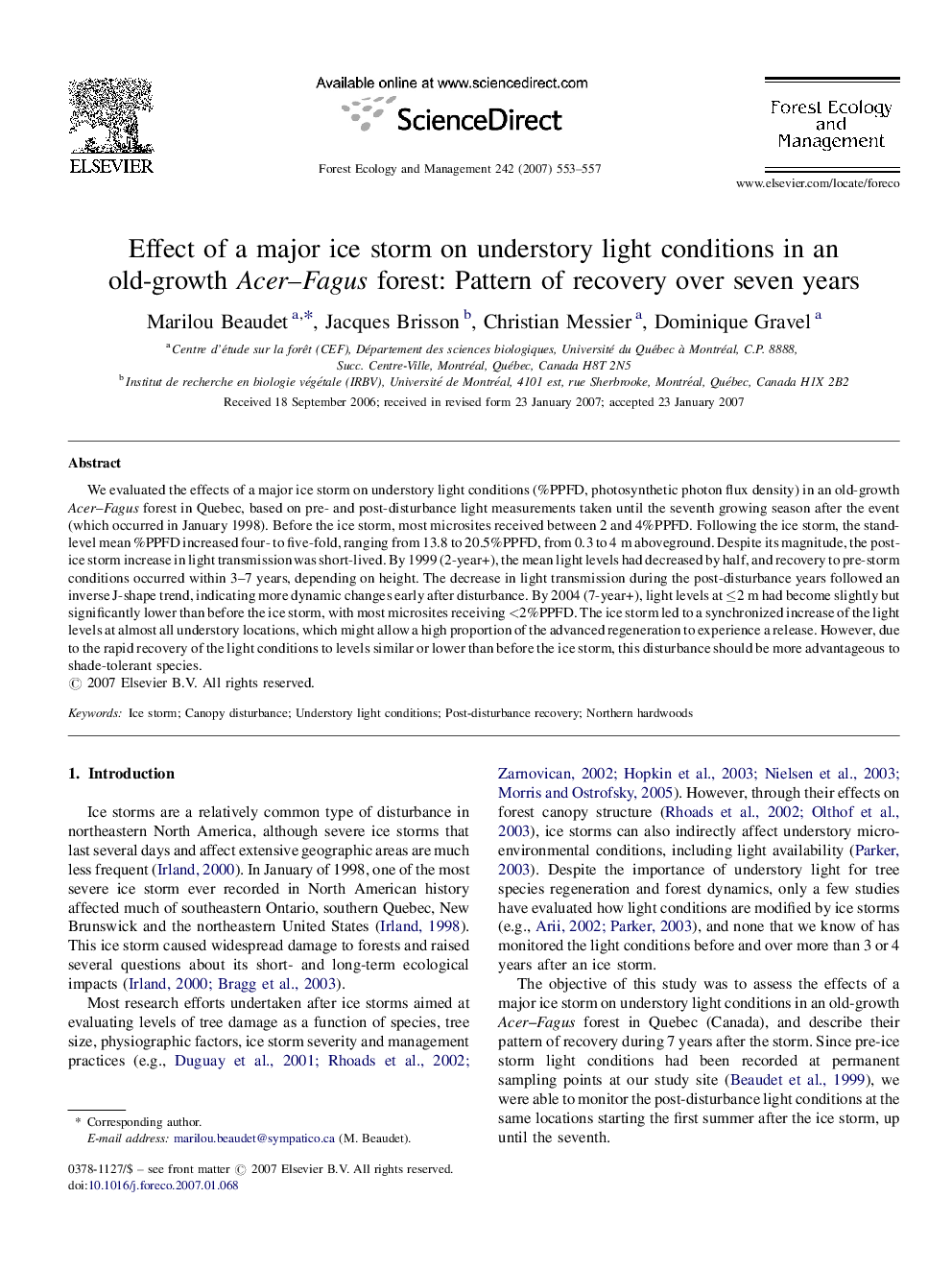| Article ID | Journal | Published Year | Pages | File Type |
|---|---|---|---|---|
| 90666 | Forest Ecology and Management | 2007 | 5 Pages |
We evaluated the effects of a major ice storm on understory light conditions (%PPFD, photosynthetic photon flux density) in an old-growth Acer–Fagus forest in Quebec, based on pre- and post-disturbance light measurements taken until the seventh growing season after the event (which occurred in January 1998). Before the ice storm, most microsites received between 2 and 4%PPFD. Following the ice storm, the stand-level mean %PPFD increased four- to five-fold, ranging from 13.8 to 20.5%PPFD, from 0.3 to 4 m aboveground. Despite its magnitude, the post-ice storm increase in light transmission was short-lived. By 1999 (2-year+), the mean light levels had decreased by half, and recovery to pre-storm conditions occurred within 3–7 years, depending on height. The decrease in light transmission during the post-disturbance years followed an inverse J-shape trend, indicating more dynamic changes early after disturbance. By 2004 (7-year+), light levels at ≤2 m had become slightly but significantly lower than before the ice storm, with most microsites receiving <2%PPFD. The ice storm led to a synchronized increase of the light levels at almost all understory locations, which might allow a high proportion of the advanced regeneration to experience a release. However, due to the rapid recovery of the light conditions to levels similar or lower than before the ice storm, this disturbance should be more advantageous to shade-tolerant species.
